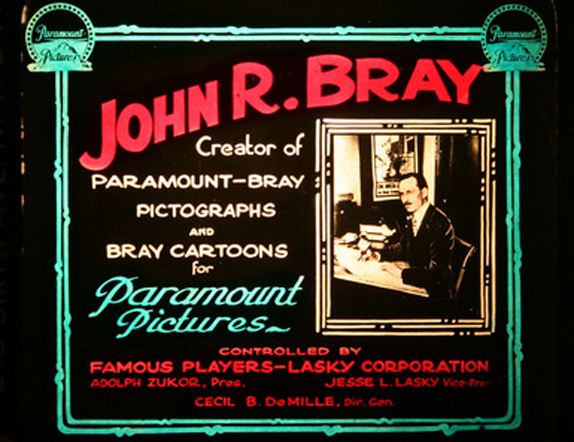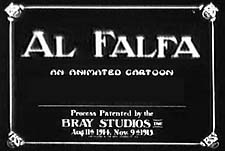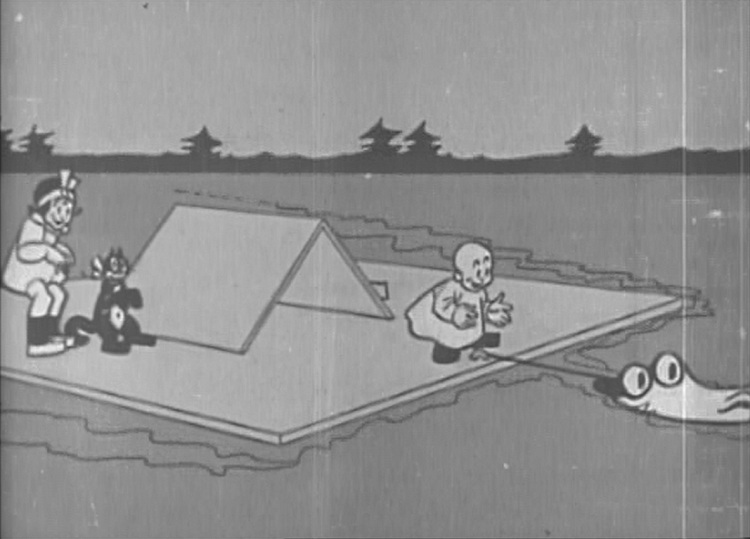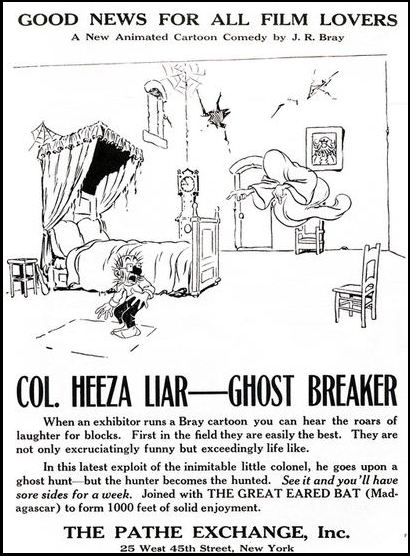Bray Productions
JR Bray Studios was an American film production company that dominated the market for animated films in the years before the First World War.
History
The company was founded in December 1914 by John Randolph Bray; Bray was therefore one of the first studio manager, exclusively for the production of animated films devoted themselves. ( Raoul Barré, who created cartoons for Thomas Alva Edison, had in his studio about the same time the production was added. ) Bray's first film series were written by himself, drawn and directed Colonel Heeza Liar movies, but from the beginning he understood it, to bind a number of very talented illustrator, directors and writers per se, such as Earl Hurd and Paul Terry.
Hurd was in his groundbreaking patenting of celluloid film process, which made producing is always renewed a complete scene background superfluous Brays business partners. Hurd's Bobby Bumps series was, Terry was responsible for Farmer Al Falfa. Others included: Wallace A. Carlson, Roland Crandall, Thomas A. Dorgan, Dave Fleischer, Max Fleischer, Clyde Geronimi, David Hand, George Herriman, Gregory La Cava, Walter Lantz, Ashley Miller, Frank Moser, Joe Rock, Pat Sullivan and Vernon Stallings.
1919 had the competing companies International Film Service to give up, and its owner William Randolph Hearst commissioned Bray to continue the series of the IFS and for that to take over the employees of the dissolved company, about Gregory La Cava. In order to deliver the required amount of animated films, Bray developed a division of labor system: Four working groups worked simultaneously at four different cartoons. Since the overall production time of an animated film was one month, the company was able to produce one film per week. Distributors were Bray's productions only Pathé, then from 1916 by Paramount Pictures and since 1919 by Goldwyn Pictures. Since the increase in orders due to the collapse of the IFS even ten cartoon series were produced at the same time.
Bray was constantly striving to increase its business in order to provide almost every kind of trick films can not only fun entertainment. He financed the semi - independent studio of C. Allen Gilbert, which established the artistically sophisticated silhouette Fantasies by classical themes. In World War Bray produced training and educational cartoons for the U.S. Army, which were so successful that J. R. Bray Studios was swamped with subsequent orders of the government and large companies. Branch offices of the company in Chicago and Detroit set forth exclusively films for the auto industry.
Bray, however did not understand the increasing investment limit so that the company could make a stable profit. In January 1920, Samuel Goldwyn took advantage of the financial situation of the company and acquired the majority stake in J. R. Bray Studios. The company was reorganized firm, cut back production to only two cartoons a week. The result was the departure of a lot of talented people, so that the quality of the films wore off quickly decisive.
J. R. Bray neglected Meanwhile, the animation production and doggedly pursued the unrealistic goal, Hal Roach to break supremacy in the field of slapstick short films. When that failed, closed Bray 1927, the entertainment division of his company. The company introduced until 1963 training films for government agencies and the industry.


.png)


.png)



